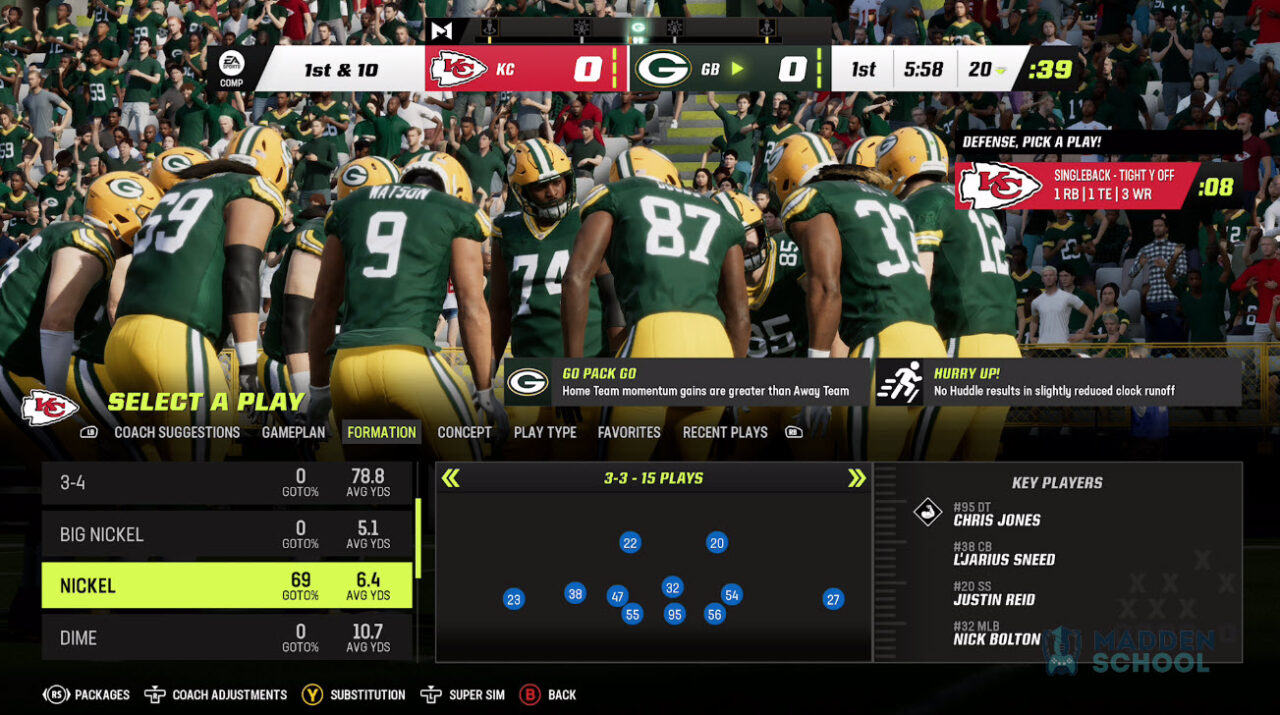Defensive strategies are crucial in college football, particularly in NCAA 25, where the competition is fierce and the stakes are high. The right playbook can mean the difference between a successful season and an early exit from the playoffs. In this article, we will explore the best defensive playbooks available for NCAA 25, providing insights into their key features, strengths, and how they can be effectively utilized by teams to dominate their opponents.
As college football continues to evolve, the need for adaptable and effective defensive strategies has never been more pressing. Coaches and players alike must stay ahead of the curve, understanding not only the playbooks but also how to implement them in various game situations. This article aims to serve as a valuable resource for players, coaches, and fans looking to deepen their understanding of NCAA 25's defensive playbooks.
We will delve into various playbooks, analyzing their structures and how they can be tailored to fit different team dynamics. By the end of this article, readers will have a solid understanding of the best defensive playbooks in NCAA 25 and how to leverage them for maximum impact on the field.
Table of Contents
- Importance of a Strong Defensive Playbook
- Top Defensive Playbooks in NCAA 25
- Implementing the Defensive Playbooks
- Training for Defensive Success
- Statistical Analysis of Defensive Playbooks
- The Future of Defensive Strategies in NCAA Football
- Conclusion
Importance of a Strong Defensive Playbook
In NCAA 25, the defensive playbook serves as the backbone of any successful football team. A well-structured defensive strategy can thwart even the most potent offenses, making it essential for teams to invest time and resources into developing a strong defensive playbook. Key aspects include:
- **Adapting to Opponent Styles**: Understanding and countering various offensive schemes.
- **Player Utilization**: Ensuring that each player’s strengths are maximized within the system.
- **In-Game Adjustments**: Being able to modify plays on the fly based on game situations.
Top Defensive Playbooks in NCAA 25
With numerous options available, identifying the most effective defensive playbooks in NCAA 25 can be challenging. Below are some of the best defensive playbooks that have proven their worth on the field.
3-4 Defense
The 3-4 defense is a popular choice among college coaches due to its versatility and ability to confuse offenses. Key features include:
- **Four Linebackers**: Provides flexibility in coverage and pass rush.
- **Disguised Blitzes**: Ability to create pressure while masking intentions.
- **Run Defense**: Strong against the run due to the additional linebacker.
4-3 Defense
The 4-3 defense remains a classic formation, known for its solid front line and effective tackling. Benefits of the 4-3 defense include:
- **Strong Defensive Line**: Four down linemen create a formidable wall.
- **Effective Coverage**: Allows for varied coverage schemes to defend against passes.
- **Simplicity**: Easier for players to understand and execute.
Nickel Defense
The nickel defense is ideal for passing situations, as it employs five defensive backs. Its advantages include:
- **Enhanced Pass Coverage**: Provides more defensive backs to combat aerial attacks.
- **Flexibility**: Can adapt to various offensive formations.
- **Faster Response**: Quick adjustments to offensive changes.
Dime Defense
When facing high-powered offenses, the dime defense, featuring six defensive backs, is a formidable option. Key aspects include:
- **Extra Coverage**: Additional defensive backs to defend against the pass.
- **Disruption**: Ability to disrupt timing between quarterback and receivers.
- **Situational Use**: Best used in obvious passing situations.
Implementing the Defensive Playbooks
Implementing the right defensive playbook requires careful consideration and practice. Here are some steps for successful implementation:
- **Assess Team Strengths**: Determine which playbook aligns with your players' skills.
- **Practice Regularly**: Consistent drills to reinforce play execution.
- **Utilize Film Study**: Analyze past performances to identify areas for improvement.
Training for Defensive Success
Training is critical in developing a cohesive defensive unit. Focus on these areas:
- **Individual Skills**: Prioritize tackling, coverage, and pass-rushing techniques.
- **Team Dynamics**: Foster communication and teamwork among players.
- **Situational Drills**: Simulate game scenarios to prepare players for real situations.
Statistical Analysis of Defensive Playbooks
Statistics play a crucial role in evaluating the effectiveness of defensive strategies in NCAA 25. Key metrics to consider include:
- **Yards Allowed**: Measure the total yards allowed per game.
- **Turnovers Forced**: Track the number of interceptions and fumble recoveries.
- **Third Down Efficiency**: Analyze the effectiveness of stopping opponents on third down.
The Future of Defensive Strategies in NCAA Football
As the game evolves, so too must defensive strategies. Anticipated trends include:
- **Increased Use of Analytics**: Leveraging data to inform play calling and strategy.
- **Hybrid Defenses**: Combining elements from multiple playbooks for greater flexibility.
- **Focus on Speed**: Emphasizing speed and agility in defensive players.
Conclusion
In conclusion, the best defensive playbooks in NCAA 25 provide teams with the tools necessary to achieve success on the field. By understanding the strengths and applications of various strategies, coaches and players can work together to implement them effectively. Whether utilizing the 3-4 defense, 4-3 defense, nickel, or dime defense, the key is to adapt and refine these strategies to suit the team's unique strengths and challenges.
As you consider your team's approach, remember to invest in training and analysis to continually improve your defensive capabilities. We encourage readers to share their thoughts, experiences, and questions in the comments section below. For additional insights, be sure to explore other articles on our site that delve into the intricacies of NCAA football.
Thank you for reading, and we look forward to seeing you back here for more engaging discussions on college football!
Is Bruno Mars Gay? Exploring The Speculations And Facts
Lamotogirl Face Reveal: Everything You Need To Know
Instagram Viral MMS Video News 2024: What You Need To Know


